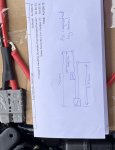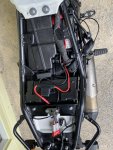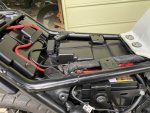Lithium Ion batteries are marvellous. Light weight, incredible cranking current, etc... But they aren't without their issues. The often need to be "woke" by turning the key on for minute or so in cold weather (below 4C), and they will not survive periods of storage below 10 volts. Parasitic key off draw will ruin a Lithium Ion battery. Installing a Lithium Ion battery in a bike with parasitic key-off draw is a bad idea.
A charger designed for MF batteries will run the battery through a drain/charge/float cycle over time. Apparently this is hard on Lithium Ion batteries.
The common opinion these days is that you must use a charger designed for Lithium Ion batteries on a Lithium Ion battery, or you run the risk of a battery fire when the battery is installed on your bike.
In my 24 years as a mechanic, I always found the regulator/rectifier to be the culprit in parasitic key-off draw issues.
Some bikes have a certain amount of key-off draw for security systems, clocks, radios, etc.... This is normal for those particular bikes.
To test for parasitic key-off draw:
1. Turn the key off.
2. Remove the ground lead from the battery.
3. Install a multimeter set to the DC mA function between the ground strap and the battery ground post (the polarity of the meter leads isn't critical, it's simply the number that matters).
4. Look for current draw. Typical parasitic draw through a defective reg/rectifier is often around 0.2-0.3 mA.
5. Unplug the reg/rectifier and see if the draw goes away.
Why is the reg/rectifier often the problem? The diodes in the rectifier are wired in reverse-bias to the battery at all times. The battery is constantly trying to force current through them in the reverse-bias direction, 24/7. Sometimes the diode(s) deteriorate over time, especially on cheaply made reg/rectifiers.
If you ever install a battery backwards, the battery will try and dump massive current through the diodes in the forward-bias direction in the few milliseconds before the fuse pops. The "depletion zone" in the diode(s) may be damaged. When you replace the fuse and re-install the battery correctly, current will now trickle through the diode(s) in the reverse direction, thus draining your battery over time.

 but draw dropped from 35mA to 8mA on replacement. Just a thought.
but draw dropped from 35mA to 8mA on replacement. Just a thought.




